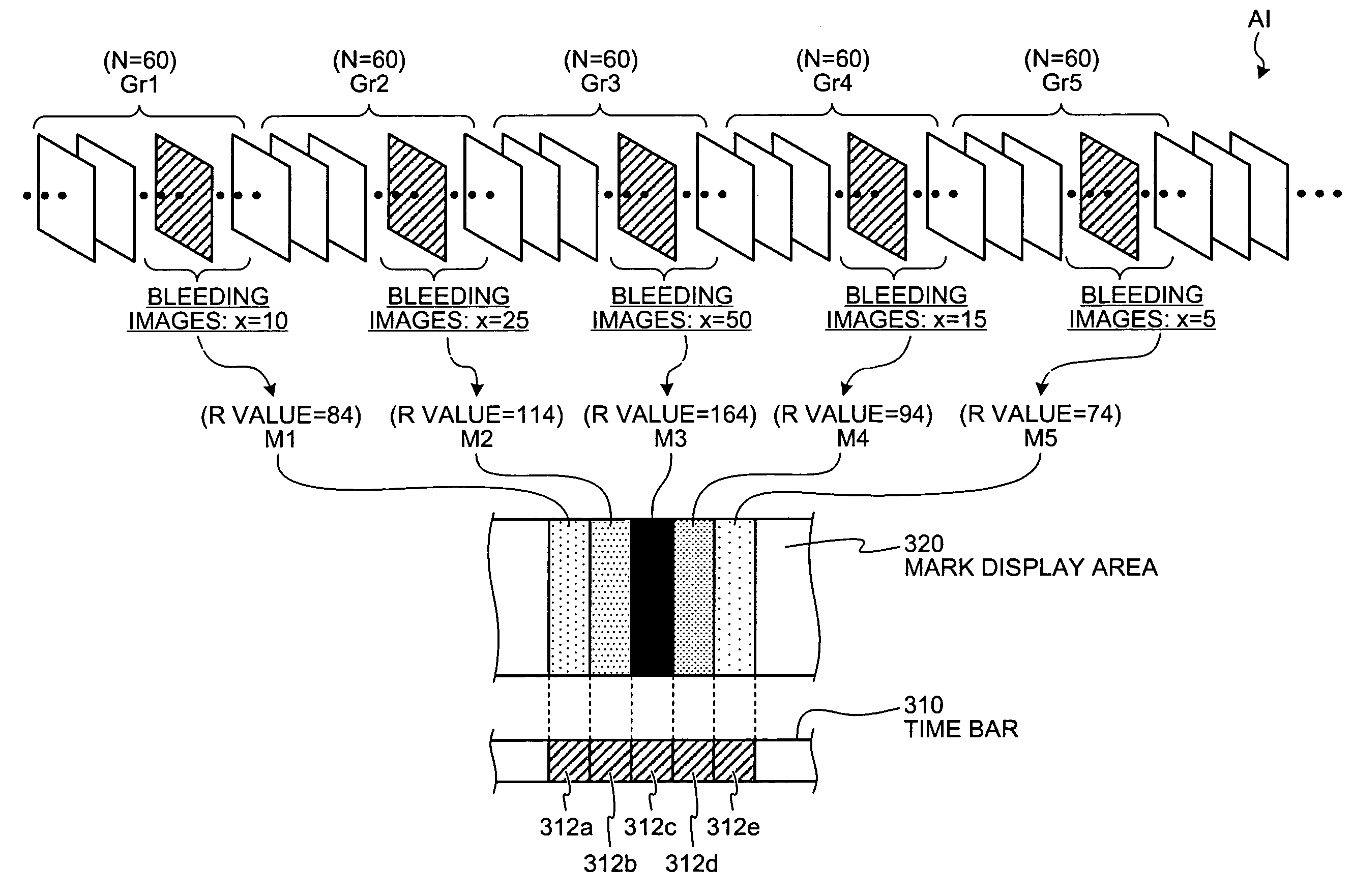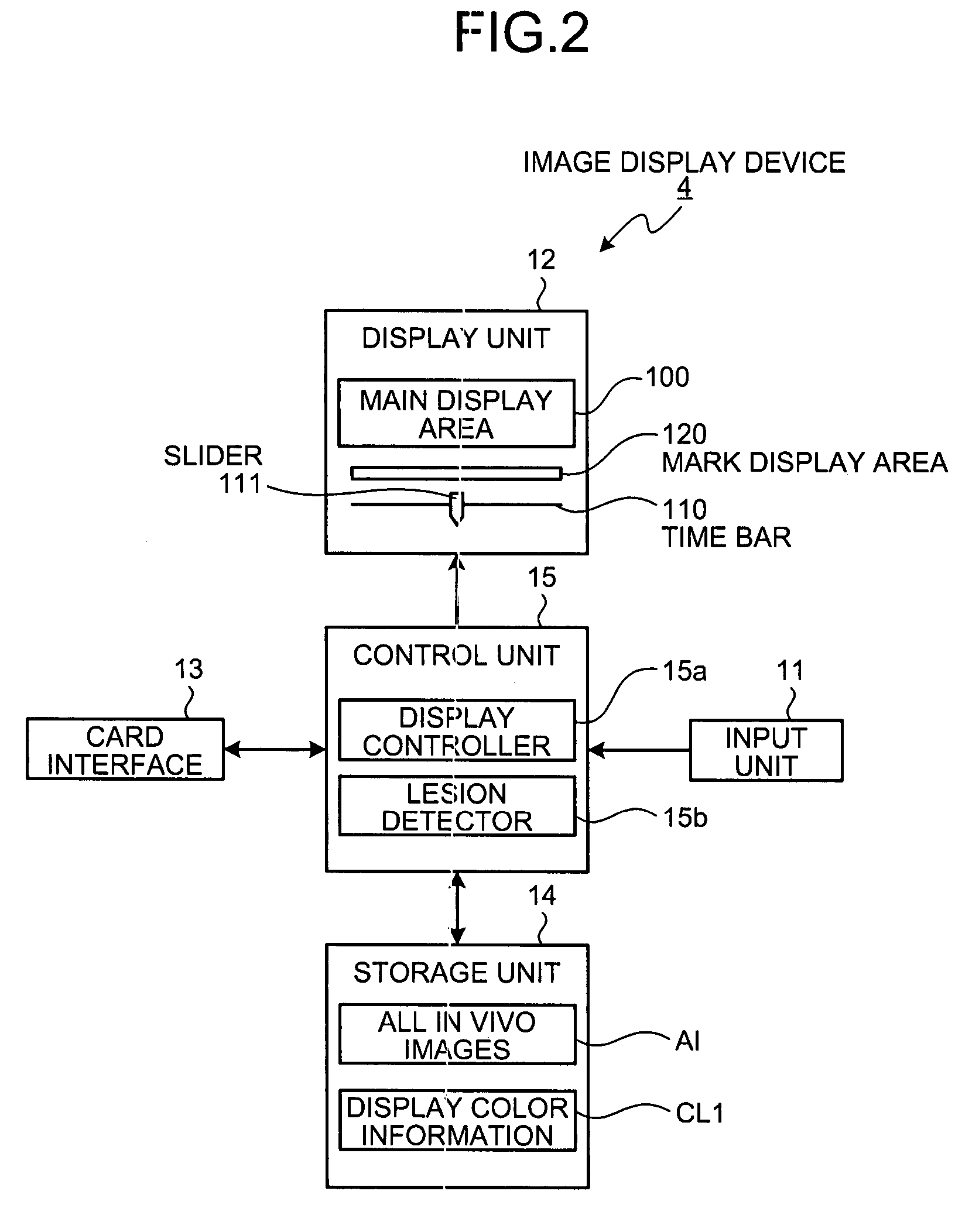Image display device
a display device and image technology, applied in the field of image display devices, can solve the problems of difficult to identify difficult to understand the distribution of images in the overall time position of the groups of images inside organs, and difficulty in identifying which of a group of partial images displayed in the display area is bleeding images
- Summary
- Abstract
- Description
- Claims
- Application Information
AI Technical Summary
Benefits of technology
Problems solved by technology
Method used
Image
Examples
first embodiment
[0054]FIG. 1 is a schematic view exemplifying a configuration example of an in-vivo information acquiring system having an image display device according to a first embodiment of the present invention. As shown in FIG. 1, the in-vivo information acquiring system according to the first embodiment of the present invention comprises a capsule endoscope 2 for picking up images inside a subject 1, a receiving device 3 for receiving images inside the subject 1 picked up by the capsule endoscope 2, an image display device 4 for displaying an image inside the subject 1 received by the receiving device 3, and a portable recording medium 5 for exchanging data between the receiving device 3 and image display device 4.
[0055]The capsule endoscope 2 is used to pick up images inside a subject (more specifically, images inside organs). The capsule endoscope 2 has an imaging function, after being introduced into the subject 1, to successively pick up images inside the subject 1 in a time series and ...
PUM
 Login to View More
Login to View More Abstract
Description
Claims
Application Information
 Login to View More
Login to View More - R&D
- Intellectual Property
- Life Sciences
- Materials
- Tech Scout
- Unparalleled Data Quality
- Higher Quality Content
- 60% Fewer Hallucinations
Browse by: Latest US Patents, China's latest patents, Technical Efficacy Thesaurus, Application Domain, Technology Topic, Popular Technical Reports.
© 2025 PatSnap. All rights reserved.Legal|Privacy policy|Modern Slavery Act Transparency Statement|Sitemap|About US| Contact US: help@patsnap.com



